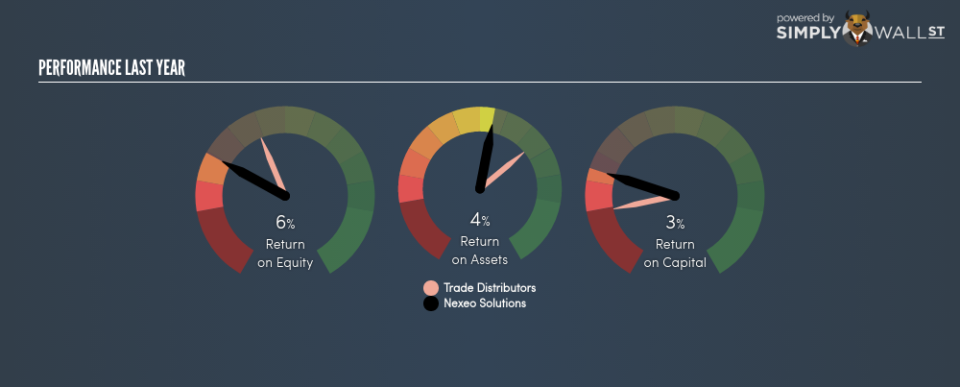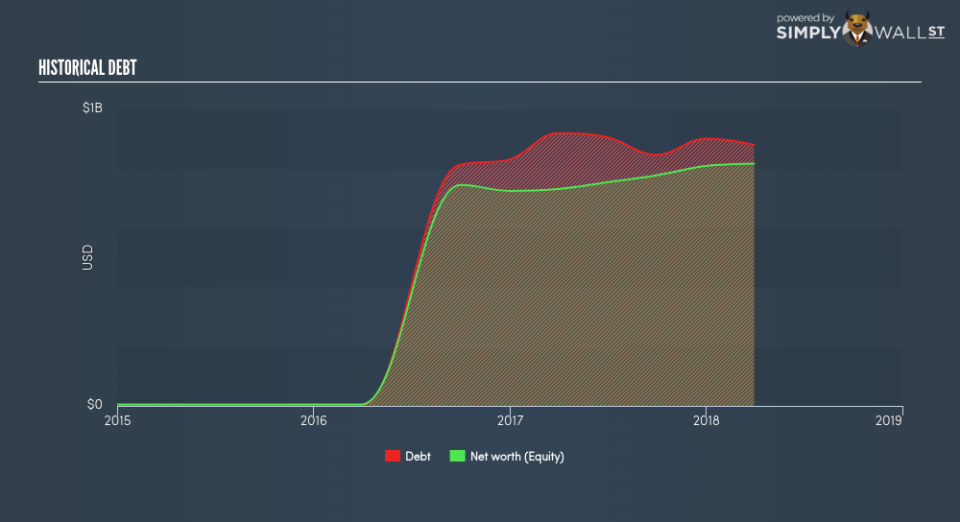Why Nexeo Solutions Inc’s (NASDAQ:NXEO) ROE Of 6.20% Does Not Tell The Whole Story

This article is intended for those of you who are at the beginning of your investing journey and looking to gauge the potential return on investment in Nexeo Solutions Inc (NASDAQ:NXEO).
Nexeo Solutions Inc (NASDAQ:NXEO) delivered a less impressive 6.20% ROE over the past year, compared to the 12.39% return generated by its industry. Though NXEO’s recent performance is underwhelming, it is useful to understand what ROE is made up of and how it should be interpreted. Knowing these components can change your views on NXEO’s below-average returns. I will take you through how metrics such as financial leverage impact ROE which may affect the overall sustainability of NXEO’s returns. Check out our latest analysis for Nexeo Solutions
Breaking down ROE — the mother of all ratios
Return on Equity (ROE) is a measure of Nexeo Solutions’s profit relative to its shareholders’ equity. For example, if the company invests $1 in the form of equity, it will generate $0.062 in earnings from this. Generally speaking, a higher ROE is preferred; however, there are other factors we must also consider before making any conclusions.
Return on Equity = Net Profit ÷ Shareholders Equity
ROE is measured against cost of equity in order to determine the efficiency of Nexeo Solutions’s equity capital deployed. Its cost of equity is 11.04%. This means Nexeo Solutions’s returns actually do not cover its own cost of equity, with a discrepancy of -4.84%. This isn’t sustainable as it implies, very simply, that the company pays more for its capital than what it generates in return. ROE can be dissected into three distinct ratios: net profit margin, asset turnover, and financial leverage. This is called the Dupont Formula:
Dupont Formula
ROE = profit margin × asset turnover × financial leverage
ROE = (annual net profit ÷ sales) × (sales ÷ assets) × (assets ÷ shareholders’ equity)
ROE = annual net profit ÷ shareholders’ equity
The first component is profit margin, which measures how much of sales is retained after the company pays for all its expenses. Asset turnover reveals how much revenue can be generated from Nexeo Solutions’s asset base. Finally, financial leverage will be our main focus today. It shows how much of assets are funded by equity and can show how sustainable the company’s capital structure is. Since ROE can be artificially increased through excessive borrowing, we should check Nexeo Solutions’s historic debt-to-equity ratio. The debt-to-equity ratio currently stands at a balanced 107.74%, meaning the ROE is a result of its capacity to produce profit growth without a huge debt burden.
Next Steps:
ROE is a simple yet informative ratio, illustrating the various components that each measure the quality of the overall stock. Nexeo Solutions’s ROE is underwhelming relative to the industry average, and its returns were also not strong enough to cover its own cost of equity. However, ROE is not likely to be inflated by excessive debt funding, giving shareholders more conviction in the sustainability of returns, which has headroom to increase further. Although ROE can be a useful metric, it is only a small part of diligent research.
For Nexeo Solutions, there are three fundamental aspects you should look at:
Financial Health: Does it have a healthy balance sheet? Take a look at our free balance sheet analysis with six simple checks on key factors like leverage and risk.
Valuation: What is Nexeo Solutions worth today? Is the stock undervalued, even when its growth outlook is factored into its intrinsic value? The intrinsic value infographic in our free research report helps visualize whether Nexeo Solutions is currently mispriced by the market.
Other High-Growth Alternatives : Are there other high-growth stocks you could be holding instead of Nexeo Solutions? Explore our interactive list of stocks with large growth potential to get an idea of what else is out there you may be missing!
To help readers see pass the short term volatility of the financial market, we aim to bring you a long-term focused research analysis purely driven by fundamental data. Note that our analysis does not factor in the latest price sensitive company announcements.
The author is an independent contributor and at the time of publication had no position in the stocks mentioned.


